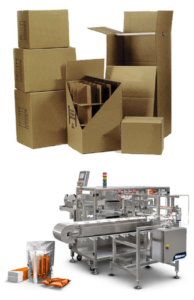

What Is Dimensional Weight and How to Reduce It
Dimensional weight, also called DIM weight, is an alternative method for calculating shipping costs, rather than simply using the actual weight of the package. It is determined by multiplying the length, width, and height of a parcel and dividing it by a dimensional factor that is determined by the specific carrier. This number is compared to the actual weight of the item, and the higher of the two numbers is used to determine the base rate for the shipment.
In simple terms, the smaller the box or parcel is, the lower the dimensional weight.
Why do carriers use dimensional weight?
Prior to 2015, most major carriers only took into account the actual weight of a package and the distance it needed to travel in order to calculate the shipping cost. Since then, they have switched to using the higher of the two numbers, either actual or dimensional weight. The reason for the switch was to encourage customers to cut down on unnecessarily large packaging in order to save storage space. Previously, a small, lightweight item in a large box would cost the same as a small, lightweight item in a small box, even though the former took up a larger amount of valuable space.

The result is that many companies are paying a lot more to ship their products than they used to. In order to help bring your costs down, here are several tips to reduce dimensional weight.
-
1. Examine the weight of your current packaging
Calculate the actual and dimensional weight of your products and packaging, particularly those that are lightweight but large. If the dimensional weight is higher than the actual weight, then you should determine how to fit the product in a smaller container or design a new packaging configuration. -
2. Determine if poly bags are a better option
The problem with rigid containers is that it is often difficult to fit a product or multiple products in them without wasting space. Poly bags, on the other hand, can provide your product similar levels of protection while also being lighter weight and creating less void space by conforming to the products within them. They can help you reduce both actual and dimensional weight. -
3. Take advantage of new packaging technology
There are several technologies that can keep dimensional weight under control. The first are automated packaging machines. Compared to manual packing, which is subject to human error, machines will efficiently fill bags or boxes completely and consistently, reducing the chance of unneeded void space in the packaging that may cost you. There is also software that will precisely determine the optimal package size based on the dimensions, weight, and durability of your product. This software helps ensure you are only using as much packaging as is necessary for the item.
At Pioneer, we look at your current operation and determine whether a different packaging material or size will reduce your dimensional weight and lower your costs while still providing adequate protection.
How Pioneer Packaging can help
From cartons to bags to clamshells, and everything in between, our team designs custom packaging solutions that are tailored specifically to your needs. We also offer numerous automation options to help make your entire packaging line more efficient.